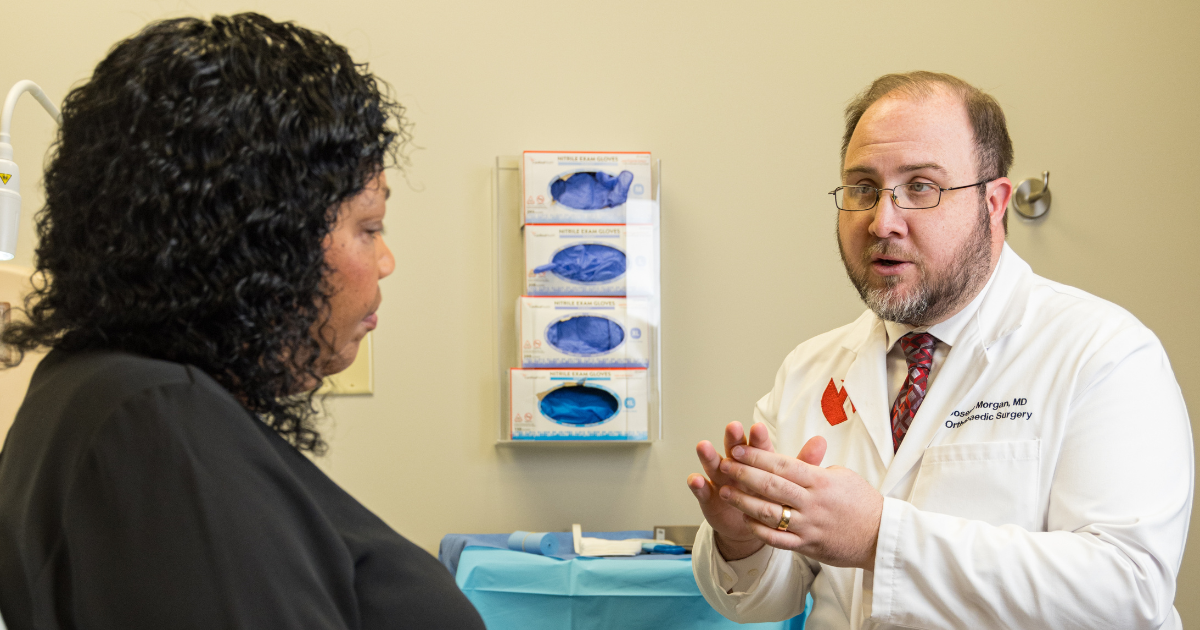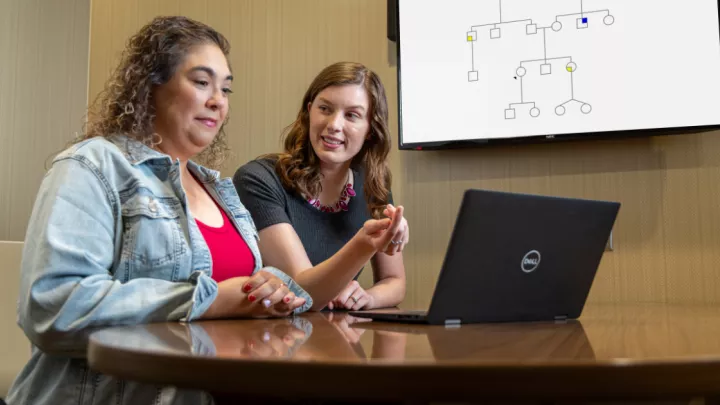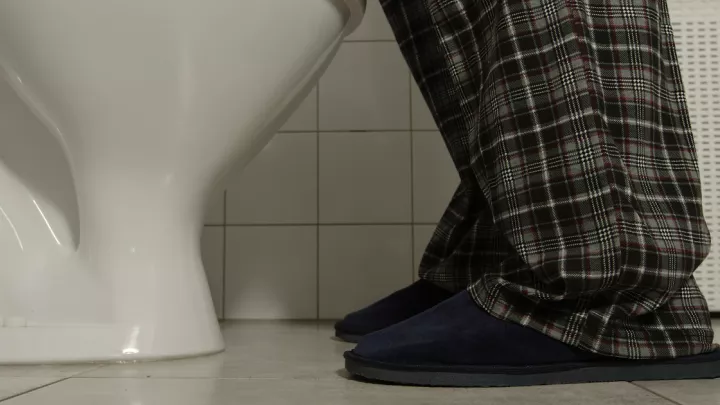Fast and convenient help for trigger finger

The pain in Paula Travis’s hand and wrist grew worse by the week.
“I thought I just had to live with it,” says Travis, a full-time secretary at the time. Then her finger began locking up randomly – while she was dressing in the morning or typing at work.
“I would have to stop what I was doing and try to pull my finger back up from its locked position,” she recalls. “It was very painful.”
After months of dealing with the pain and locking finger, Travis decided to see a doctor. Orthopaedic surgeon and hand specialist Joseph Morgan, MD, diagnosed Travis with carpal tunnel syndrome and trigger finger.
Trigger finger is associated with catching or locking of a finger or thumb when it is in full or near full flexion. Trigger finger refers to the catching or snap sensation or sound a person feels. It may also cause tenderness in the palm past the last crease, especially when grasping or squeezing objects.
The condition occurs when the protective sheath surrounding the flexor tendon (which helps hold the tendon to the bone) becomes too tight, irritated and swollen. This causes a nodule to form, making it difficult for the tendon to glide smoothly. In some cases, the finger may become locked.
Common symptoms include:
- Pain and tenderness at the base or palm of the affected finger.
- Pain with grasping or squeezing objects.
- Clicking or catching sensation when flexing the finger.
- Finger stiffness, especially in the morning.
- Locking of the finger in a bent position.
When symptoms are mild, the pain may come and go but will usually worsen with time. You can try home remedies like ice and ibuprofen, but most patients have no luck with resolving the condition on their own, notes Dr. Morgan.
“If you have pain that lasts more than a few weeks, you should get evaluated,” recommends Dr. Morgan. “The sooner you seek treatment, the more likely we will be able to treat your condition with conservative medical therapy.”
Risk factors
In more than 50% of cases, there is no known cause for trigger finger. People at highest risk for trigger finger are those with a condition that causes swelling in the fingers. This may include those with:
- Diabetes
- Hypothyroidism
- Arthritis
- Injury to the finger
- Jobs that require repetitive gripping or grasping
Treatment for trigger finger
The majority of cases can be treated with a steroid shot that is injected at the base of the affected finger. Up to 90% of patients get immediate relief by the next day or within a week, Dr. Morgan says. If pain continues or returns after six weeks or more, another shot can be administered.
Treatment is most successful when trigger finger is treated early on, pain is mild and there is occasional clicking. “If you wait until your condition is more advanced and your finger is locking, there is a greater chance you will need surgery to treat the problem,” says Dr. Morgan.
Unfortunately, in Travis’s case, her condition had become more advanced. Since she also needed surgery for carpal tunnel, it was decided to bypass the steroid shots and treat both problems during the same operation.
The surgical procedure is quick and convenient and can be performed in clinic. No fasting is required. There are no restrictions after surgery and patients can return to normal activities immediately, notes Dr. Morgan. A local anesthetic is applied to the palm. Then, a small incision is made at the base of the finger. The sheath is cut, and the area is closed with a couple of stitches.
Travis says her trigger finger was gone after surgery. “I went to lunch with my girlfriend after surgery, took some Tylenol when I got home and was ready to go back to work the next day,” she says. “It was the best decision I ever made. I just wish I had done the surgery sooner.”
Travis’s quick recovery and success are the norm with this procedure. “In nearly all cases, the surgery is curative,” Dr. Morgan says. “In rare cases, the area may heal and become tight again years later. If this occurs, a steroid shot or revision surgery will typically restore normal function.”
Unfortunately, once you have trigger finger, you are at greater risk of developing it in other fingers. It can involve multiple fingers and fingers in both hands. Such was the case for Travis. Several years later, Travis developed trigger finger in her other hand, which was repaired with surgery. And once again, Travis says she is experiencing trigger finger on a new finger on her right hand.
“I’m just glad I found Dr. Morgan,” says Travis. “He has an awesome personality, and his team is so good and easy to work with. I would recommend him to anyone in a heartbeat.”
Get evaluated. Call 800.922.0000 to schedule an appointment with one of our hand specialists.







